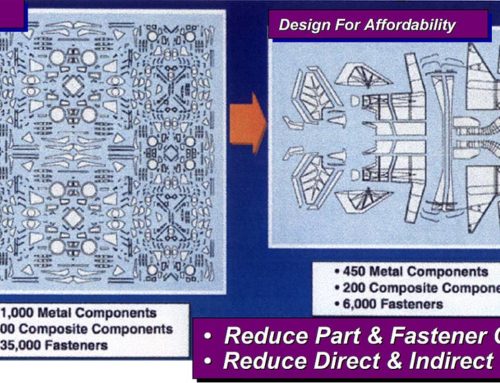Composites have been used in space applications for decades, and their use continues to grow. Composite applications can be found on human spaceflight vehicles, satellites and payloads, and the launch vehicles that are used to get these to space. Composites are enabling for spacecraft where lightweight and environmental stability are critical to mission success. They are also used extensively in launch vehicles for a growing number of applications. Solid rocket motors and pressure vessels for fuel and gas storage are typically reinforced with composites. Composites also are the standard for ablative and other high temperature components in rocket motor nozzles and reentry heat shields dating back to the Apollo era.
High modulus carbon fiber reinforced laminates are the standard for many composite spacecraft applications. In human-rated crew capsules, composite panels are used to support the thermal protection system (TPS) required for vehicle reentry. The temperature capability and low thermal expansion provides additional benefit by reducing the amount of TPS material needed, which lowers the mass of the vehicle. Carbon fiber laminates are used extensively on satellites and payload support structures. Typical bus structures are built from aluminum honeycomb sandwich panels with either carbon fiber or aluminum facesheets. Optical benches and other structures that must maintain dimensional stability for accuracy are always built from high modulus, high thermal conductivity carbon fiber laminates with low moisture absorption resins, usually cyanate ester. These materials help maintain extreme dimensional stability over temperature extremes and in the vacuum of space. RF reflectors and solar array substrates also utilize high modulus carbon fiber laminates for their stiffness and dimensional stability. Other common composite applications include struts and booms for deployable instruments.
Launch vehicles use composite structures for their deployable payload fairings as well as for sections of the core booster such as interstages. The need for larger composite structures has pushed the development of high quality Out-of-Autoclave composite systems to fabricate these components with fewer joints thereby increasing the benefits of using composite structures. Unlined composite cryo-tanks have also been successfully developed.
Filament wound composite structures are also used extensively for space applications. Solid rocket motors, often used as upper stages for spacecraft, are nearly always filament wound from high strength carbon fiber. Pressurized tanks used for liquid hydrazine fuel and various gasses are typically very thin wall metallic liners overwrapped with carbon fiber in epoxy resin.
Special high temperature composites are utilized for the hottest components in rocket nozzles including throats and exit cones. Similar composite materials are also used for reentry vehicle heat shields. They fall into two general categories, ablatives and ceramic matrix composites. Ceramic matrix composites are carbon or ceramic fiber reinforced with carbon or ceramic matrixes. Carbon-carbon is the most common of these materials. The Space Shuttle used carbon-carbon panels on the nose and the wing leading edge to protect it from temperatures exceeding 2,300°F seen during reentry. Ablative composites are usually either silica or carbon fiber reinforced phenolic which absorb heat by changing state. An ablative heat shield was used on the Apollo capsule, and a similar heat shield is being used on the Orion capsule, which will return to humans to the moon and beyond.




















